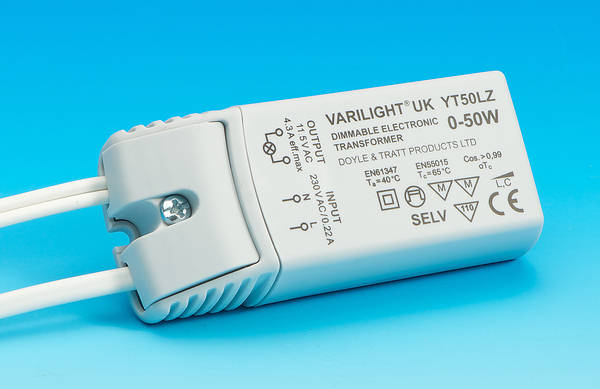There is no appropriate transformer as LED strips require
DC and transformers give out AC, as I have said several times. That also includes switch mode power supplies as above incorrectly labelled "electronic transformer".
The appropriate driver is a 12 volt DC power supply.
I would agree most likely not suitable as most likely needs a DC supply, or should it be called a polarised supply? Since the current likely does alternate between zero and maximum can't really say it's not alternating current, if not smoothed it will still cause imbalance it wrong feeders are used in the same way as true AC. Plus we are only guessing the strip lights actually need a DC supply, when we first started talking about MR16 replacements we also assumed the 12 volt type were DC, however it was found many were marked 50 Hz.
I think it very likely that the LED's are in groups of 3 plus a resistor as a simple driver between two feeder wires, however we have not seen any spec for the strip so we are just assuming. I looked at a few adverts
this one was interesting this is a part copy of the data sheet.
- Power: 70 W
- Voltage: 12V DC
- Frequency: 50-60 Hz
- Lumens: 1680 lm/m
I am sure it is DC but it also states 50 - 60 Hz which if not smoothed and using a transformer and simple rectifier it could be still 50 or 60 Hz depending if used in Europe or USA. The other thing stated in nearly every add is "for decoration" at 24 lumen per watt they could not be sold for lighting. The last point to make is dimmers and colour changing modules are placed between the power supply output and the strip, so it would seem it is common to switch the extra low voltage supply, I know with inverters to drive motors there is a warning not to put any switches in the output, and so it does go against the grain, but it seems for lighting it is permitted. At 12 V 70 W however that is around 6A and if DC and there is a if there as it could be polarised AC, then the switch must be designed for DC.
It does seem an odd thread being split like this, think it would have been better kept to one. I am assuming this is just between electricians?
So one other point if using a pulsed supply at around 47 kHz even if polarised then the feeder could be critical as to length just like with an AC supply, however the problem is
a typical advert does not tell us what we are buying, find a well known make and you may find a data sheet, however in the main you would need to buy and then feed the output into an oscilloscope to find out what you really have, I suppose a cheap method feed a transformer if no output then input is DC if there is an output then input is AC but you need to buy the power supply first, one really has no idea what you are buying.
Has any one actually tested one, I am unlikely to buy one just to test it, so I will never know.




